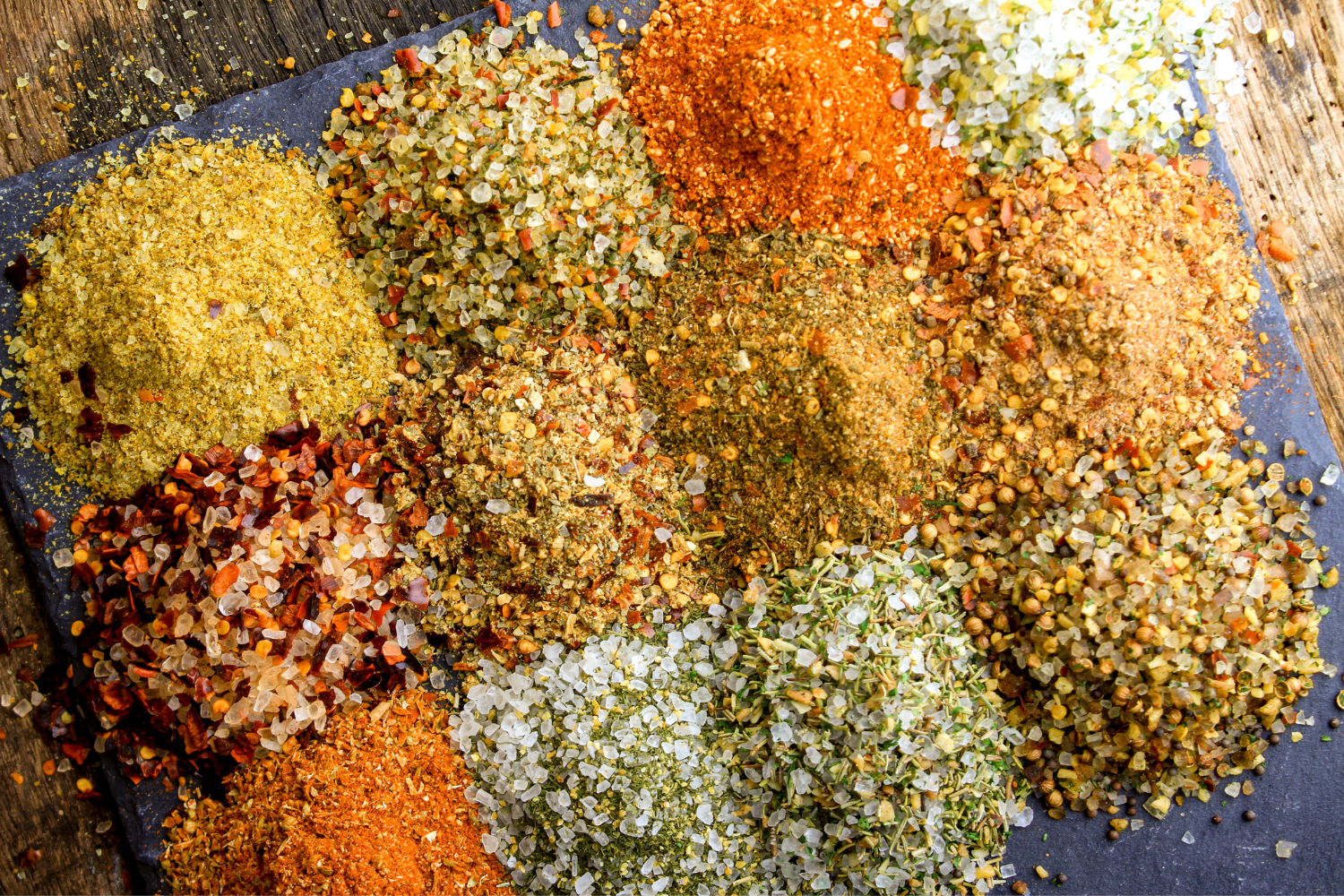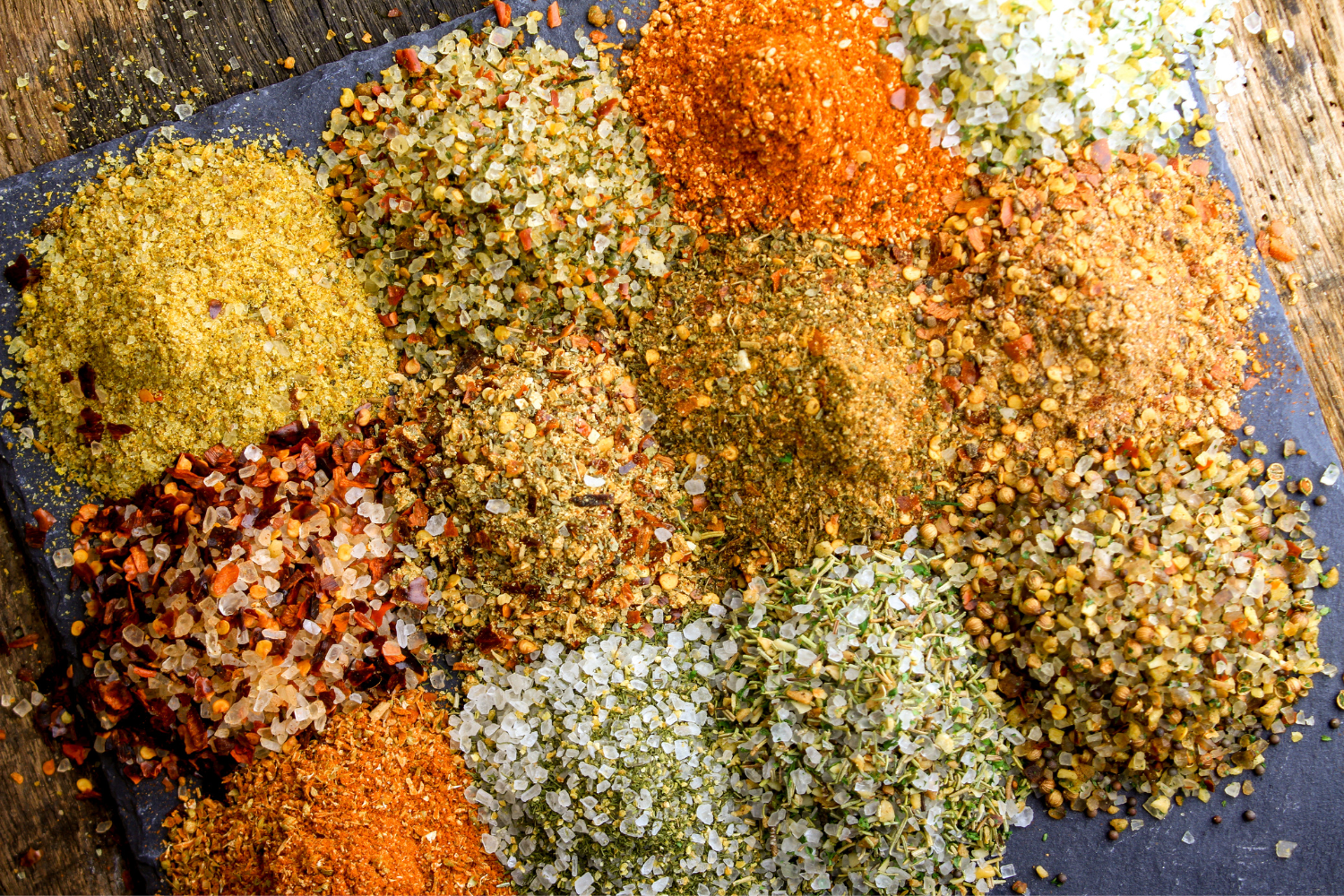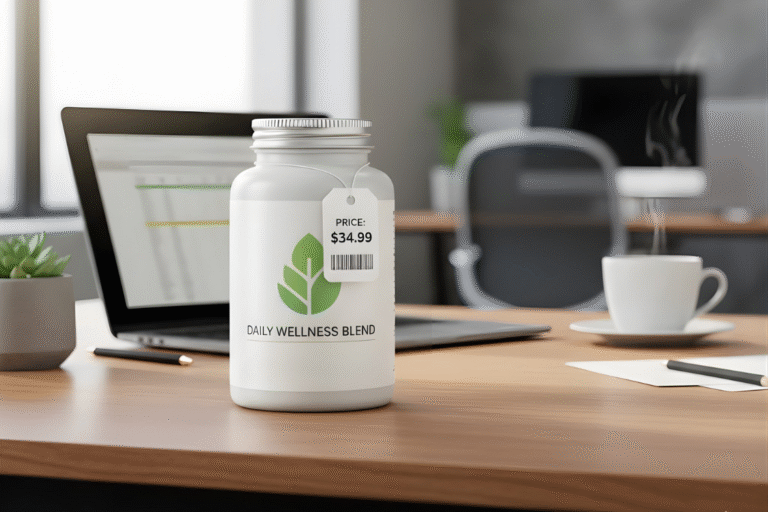Flavor plays a significant role in consumer satisfaction, especially in nutrition products. As demand for clean-label and health-conscious options grows, food manufacturers are increasingly using natural flavoring in nutrition products instead of artificial flavors.
Understanding the differences between natural and artificial flavors, their sources, and their impact on nutritional value is essential for food companies looking to enhance taste while maintaining product integrity. This guide explores natural flavors, their benefits, and how to select the best ingredients for your brand.
What Is Natural Flavoring?
Natural flavoring in nutrition comes from real food sources such as fruits, vegetables, herbs, spices, and fermentation. Unlike artificial flavors, natural flavors are derived from real food sources but may still undergo processing and contain approved additives for stability and consistency.
Food manufacturers use natural flavors in products like protein powders, meal replacements, functional beverages, and supplements. These flavors enhance taste while maintaining a clean-label appeal for health-conscious consumers.

Natural vs. Artificial Flavoring
Natural and artificial flavors differ in their sources, processing, and consumer perception. While natural flavors come from plant or animal material, artificial flavors are chemically synthesized. The table below highlights key differences:
| Feature | Natural Flavoring | Artificial Flavoring |
|---|---|---|
| Source | Derived from plants, animals, or fermentatio | Chemically synthesized in a lab |
| Processing | Minimal | Often highly processed |
| Perception | Considered cleaner and healthier | Often avoided by health-conscious consumers |
| Examples | Vanilla extract, citrus oils, cocoa powder | Vanillin, artificial fruit flavors, synthetic caramel |

Types of Natural Flavoring for Nutrition Products
Natural flavors come in various forms, each suited for different nutrition products. Understanding these types helps food companies select the best options for their formulations.
Fruit & Plant-Based Extracts
Extracts from fruits and plants provide natural sweetness and depth to nutrition products. These flavors are derived from fruit juice, vegetable juice, and other natural sources, making them ideal for clean-label formulations. Examples include lemon, orange, apple, mango, and berry extracts.
Best for:
- Functional beverages
- Flavored protein powders
- Supplements
Vanilla & Cocoa-Based Flavors
Vanilla and cocoa are among the most natural flavors used in nutrition products. Vanilla extract, sourced from vanilla beans, enhances meal replacements and flavored protein powders. Cocoa powder, derived from cacao beans, provides a rich chocolate taste without artificial chemicals. Both options are commonly found in packaged foods and supplements.
Herbal & Spice Extracts
Herbs and spices add depth and complexity to nutrition products. These natural extracts come from plant components such as bark, bud, root, and leaf, providing flavor and functional benefits. Examples include cinnamon, ginger, peppermint, and turmeric.
Best for:
- Functional drinks
- Health-focused supplements
- Energy products
Essential Oils & Distillates
Essential oils and distillates are concentrated flavoring constituents derived from plants. These extracts, such as cinnamon oil, enhance taste while maintaining a clean-label profile. Examples include peppermint oil, citrus oils, and cardamom oil.
Best for:
- Beverages
- Chewable supplements
- Flavored capsules
Fermented Natural Flavors
Fermented flavors develop through natural processes involving edible yeast or bacteria, contributing to complex taste profiles and aligning with functional food trends. Examples include fermented vanilla, miso, and kombucha flavors.
Best for:
- Probiotic drinks
- Plant-based protein powders
- Functional foods
Benefits of Using Natural Flavoring in Nutrition Products
Natural flavoring in nutrition products offers advantages beyond taste. It enhances product appeal, supports health-conscious branding, and aligns with clean-label trends.
Clean-Label Appeal & Consumer Trust
Consumers increasingly look for products without artificial flavors or synthetic chemicals. Natural flavors help food manufacturers meet clean-label demands, though organic certification depends on specific sourcing and processing requirements. Products using natural flavoring often gain higher consumer trust, making them more competitive in the market.
Health & Wellness Advantages
Some natural flavors may contain trace amounts of compounds like antioxidants or phytonutrients, but their primary role is to enhance taste rather than provide nutritional benefits. Unlike some artificial flavors, natural flavors may provide a more neutral taste without synthetic additives commonly avoided by certain consumers.
Enhanced Taste & Authentic Flavor Profiles
Natural flavors provide a more authentic taste compared to artificial ones. They eliminate the overly sweet or artificial notes often found in synthetic alternatives, making nutrition products more enjoyable and appealing to consumers.
Better Brand Positioning
Natural flavors can support clean-label branding, but organic and non-GMO certifications require meeting specific ingredient and processing standards. Health-conscious consumers actively seek minimally processed options, and natural flavoring helps food companies meet these expectations while differentiating their products in the marketplace.

Challenges of Using Natural Flavoring in Formulations
While natural flavors offer many benefits, they also present challenges in cost, stability, and consistency. Food manufacturers must carefully manage these factors to maintain product quality.
Cost Considerations
Due to sourcing, extraction, and processing methods, natural flavoring is often more expensive than synthetic alternatives. High-quality, organic flavoring can further increase production costs, making it essential for brands to balance affordability with clean-label demands.
Stability & Shelf Life
Some natural flavors degrade faster over time compared to artificial flavors, affecting product longevity. Proper storage and formulation techniques, such as encapsulation or blending with stabilizing agents, help maintain taste quality and extend shelf life.
Consistency in Flavor Profile
Natural flavors can vary slightly from batch to batch due to seasonal ingredient changes and natural sourcing variations. To ensure consistency, brands must work with experienced flavor houses that understand how to create stable, high-quality flavoring constituents derived from natural sources.

How to Choose the Right Natural Flavoring for Your Nutrition Product
Selecting the right natural flavoring in nutrition products requires understanding your target audience, product type, and ingredient compatibility. The right choices enhance taste, meet consumer preferences and maintain product quality.
Consider Your Target Audience
Different consumer groups have distinct flavor preferences. Understanding their needs helps brands create appealing products.
- Athletes & Fitness Enthusiasts: Prefer refreshing fruit flavors like citrus and berry.
- Wellness Consumers: Enjoy herbal and botanical flavors like ginger and lavender.
- Vegan & Plant-Based Users: Appreciate cocoa, vanilla, and nut-based flavors.
Match Flavoring to Product Type
The type of nutrition product determines which flavors work best. Matching flavors to product formulations improves taste and consumer satisfaction.
- Protein Powders: Vanilla, chocolate, peanut butter, and berry.
- Functional Beverages: Citrus, apple, and tropical fruit blends.
- Meal Replacements: Coffee, almond, cinnamon, and honey flavors.
Ensure Compatibility with Other Ingredients
Certain natural flavors interact differently depending on the formulation. Plant-based proteins may require additional balancing compared to whey-based products to achieve a smooth taste. Fermented flavors like kombucha or miso may require pH adjustments in liquid formulations to maintain stability and prevent unwanted taste changes.
Work with Trusted Suppliers
Partnering with reputable natural flavor manufacturers ensures consistency and quality. Reliable suppliers provide flavors free from artificial chemicals while meeting regulatory standards. Look for certifications such as USDA Organic, Non-GMO, and Clean Label Project Verified to guarantee clean-label compliance and consumer trust.
Best Practices for Formulating with Natural Flavors
Optimizing formulations with natural flavors requires balancing taste, stability, and sensory appeal. Proper techniques improve product quality and shelf life.
Balancing Sweetness & Acidity
Natural sweeteners like monk fruit or stevia can enhance fruit flavors and provide alternatives to artificial sweeteners, depending on the formulation. Adjusting acidity levels prevents bitterness in citrus-based flavors, ensuring a smooth, enjoyable taste.
Conducting Sensory Testing
Testing different flavor concentrations helps brands find the right balance between taste and consumer preference. Before finalizing the formulation, sensory testing panels and consumer feedback ensure that flavors align with market expectations.
Maintaining Flavor Stability
Encapsulated natural flavors may help improve stability by protecting sensitive compounds from oxidation and moisture exposure. Storing products in airtight packaging further prevents flavor degradation, ensuring consistency in taste and quality over time.

Choosing the Right Natural Flavoring for Your Nutrition Brand
Natural flavoring enhances the taste, appeal, and marketability of nutrition products while aligning with consumer demand for clean-label options. Selecting the right flavors depends on product type, target audience, and ingredient compatibility. Working with trusted suppliers and conducting extensive testing ensures consistent, high-quality formulations that meet industry standards and consumer expectations.
Frequently Asked Questions
What is the best natural flavoring for protein powders?
Vanilla, cocoa, and berry extracts are commonly used due to their strong, complementary flavors.
Are natural flavors always healthier than artificial flavors?
While natural flavors come from real food sources, they still undergo processing. However, they lack synthetic chemicals linked to health concerns.
How do I ensure my natural flavors are high quality?
Choose suppliers with organic, non-GMO, and third-party certifications. Conduct taste tests and check for consistency in formulation.
Can natural flavors affect product stability?
Yes, some natural flavors may degrade faster than artificial ones. Encapsulation and proper storage help maintain stability.
Are there any regulations for using natural flavors in supplements?
Yes, natural flavors must comply with FDA and industry standards. Brands must clearly label ingredients and disclose allergens if present.
References
- U.S. Department of Agriculture. (n.d.). Labelling Organic Products. https://www.ams.usda.gov/rules-regulations/organic/labeling
- U.S. Food and Drug Administration. (2025). Expiration Dates – Questions and Answers. https://www.fda.gov/drugs/pharmaceutical-quality-resources/expiration-dates-questions-and-answers
- U.S. Food and Drug Administration. (2024). Food Additives and GRAS Ingredients – Information for Consumers. https://www.fda.gov/food/food-ingredients-packaging/food-additives-and-gras-ingredients-information-consumers
- U.S. Food and Drug Administration. (2023). Questions and Answers on Dietary Supplements. https://www.fda.gov/food/information-consumers-using-dietary-supplements/questions-and-answers-dietary-supplements
- U.S. Food and Drug Administration. (2018). Substances Added to Food (formerly EAFUS). https://www.fda.gov/food/food-additives-petitions/substances-added-food-formerly-eafus




